Sewage treatment plants (STPs) are essential facilities that play a critical role in managing wastewater from homes, businesses, and industries. By treating sewage before it is released back into the environment, these plants help protect public health, preserve water quality, and sustain ecosystems. In this blog, we will delve into what sewage treatment plants are, how they work, and why they are so important.
What Are Sewage Treatment Plants?
Sewage treatment plants are facilities designed to remove contaminants from wastewater, primarily from domestic sources. The main goal of STPs is to produce clean water (effluent) that can be safely discharged into water bodies or reused, and to manage the byproducts of sewage treatment, such as sludge. These plants use a combination of physical, chemical, and biological processes to treat sewage and remove pollutants.
How Do Sewage Treatment Plants Work?
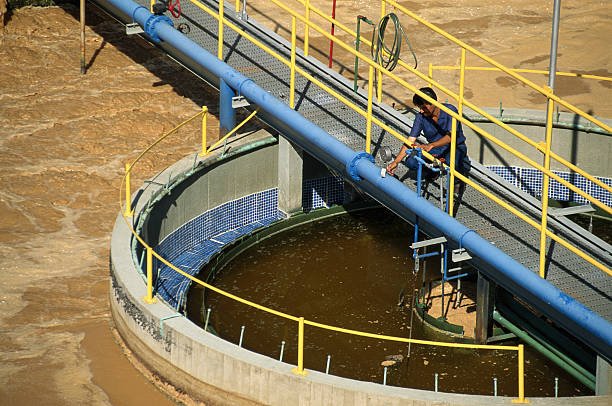
The treatment process in an STP typically involves several stages, each aimed at progressively removing different types of contaminants from the wastewater.
1. Preliminary Treatment: Screening and Grit Removal
- Screening: The incoming sewage first passes through screens to remove large objects like rags, sticks, and other debris that could damage equipment or obstruct the flow.
- Grit Removal: The wastewater then flows into a grit chamber, where heavier particles such as sand, gravel, and small stones settle to the bottom and are removed.
2. Primary Treatment: Sedimentation
In this stage, the wastewater enters primary sedimentation tanks where it is allowed to sit undisturbed. During this period, heavier solids (sludge) settle to the bottom, while lighter materials such as grease and oils float to the surface and are skimmed off. The settled solids are collected and sent for further treatment.
3. Secondary Treatment: Biological Processes
Secondary wastewater treatment involves biological processes that use microorganisms to break down organic matter in the sewage.
- Aeration: In aeration tanks, air is introduced to the wastewater, providing oxygen to aerobic bacteria that consume organic pollutants. This process converts these pollutants into carbon dioxide, water, and additional bacterial biomass.
- Clarification: The treated water then flows into secondary clarifiers, where the microbial biomass (activated sludge) settles out. Some of this sludge is recycled back to the aeration tanks to maintain the bacterial population, while the rest is removed for sludge treatment.
4. Tertiary Treatment: Advanced Cleaning
Tertiary treatment is an additional step used to further purify the wastewater and remove any remaining contaminants.
- Filtration: The water may be passed through filters to remove finer particles.
- Disinfection: Chemicals such as chlorine or ultraviolet light are used to disinfect the water, killing any remaining pathogens.
- Nutrient Removal: In some cases, additional processes are used to remove nutrients like nitrogen and phosphorus, which can cause environmental problems if discharged into water bodies.
5. Sludge Treatment and Disposal
The sludge collected during primary and secondary treatment undergoes further processing to reduce its volume and prepare it for disposal or reuse. Common sludge treatment methods include anaerobic digestion, which breaks down organic matter to produce biogas (a renewable energy source), and dewatering, which removes excess water to produce a solid material that can be safely disposed of or used as fertilizer.
Innovative Technologies Revolutionizing Modern Sewage Treatment Plants
Modern sewage treatment plants have evolved significantly, incorporating innovative technologies to treat sewage water more efficiently. These systems utilize advanced processes such as activated sludge, membrane bioreactor (MBBR) technology, and reverse osmosis to ensure the treated water meets stringent quality standards. The integration of sewage treatment plant systems with cutting-edge technologies enhances the overall sewage treatment plant process, enabling facilities to treat wastewater effectively and promote sewage recycling.
By leveraging modern techniques in sewage water treatment, sewage processing, and sewage and water treatment, these plants can address the growing global demand for sustainable water solutions. Additionally, sewage treatment plants support wastewater reuse, reducing reliance on natural water resources and helping communities become more water-efficient.
Key Considerations for Sewage Treatment Plant Maintenance
Efficient maintenance is essential for a fully operational sewage treatment plant. Regular checks on the sewage treatment plant tank, as well as ensuring proper function of systems like sedimentation tanks and biological sewage treatment plant units, prevent breakdowns and improve performance. Without routine maintenance, sewage waste water treatment may become less effective, leading to potential environmental contamination.
Moreover, maintaining key components like the STP plant, sewage treatment facility, and sewage treatment tanks ensures that the sewage treatment plant process runs smoothly, providing high-quality treated water. Whether you’re dealing with small sewage treatment plants or large-scale industrial sewage treatment plants, regular inspections are essential for maximizing efficiency and lifespan.
Environmental IMPACT OF SEWAGE TREATMENT PLANTS
Sewage treatment plants (STPs) are crucial for environmental sustainability, offering significant benefits in pollution control and water conservation. By treating wastewater before its release, STPs drastically reduce water pollution, ensuring that harmful contaminants like organic matter, pathogens, heavy metals, and excess nutrients are removed or minimized before the water re-enters rivers, lakes, or oceans. This process protects aquatic life by preventing eutrophication—a phenomenon caused by nutrient overload that leads to oxygen depletion and fish kills—and safeguards biodiversity in water bodies.
Furthermore, STPs play a vital role in water conservation by enabling the reuse of treated water for irrigation, industrial processes, and even groundwater recharge, thus reducing the demand on scarce freshwater resources. Modern sewage treatment facilities also contribute to pollution control by capturing and processing sludge, which can be converted to biogas for renewable energy, further reducing environmental impact. In summary, STPs are essential for promoting environmental sustainability, protecting aquatic ecosystems, and supporting the circular use of water resources.
Why Regular Maintenance of Sewage Treatment Plants is Crucial
Neglecting the maintenance of sewage treatment plants can lead to costly breakdowns and disruptions in the sewage treatment plant process. When components like activated sludge systems, biological sewage treatment units, or STP sewage treatment plant tanks are not properly maintained, the ability to treat sewage waste water effectively is compromised. Untreated water could potentially be released back into the environment, causing pollution.
Through regular maintenance, facilities ensure that their sewage treatment plant is fully functional and that sewage processing occurs as intended. Ensuring that each treatment phase—primary treatment, secondary treatment, and tertiary treatment—runs smoothly allows for the safe discharge of treated water or sewage recycling plant operations, contributing to sustainable water management.
KEY COMPONENTS OF SEWAGE TREATMENT PLANTS
A modern sewage treatment plant comprises several essential units, each performing a specific function to convert raw sewage into clean, reusable water. Below is a breakdown of the key components:
1. Bar Screens
Function: Capture and remove large debris such as sticks, rags, and plastics from the incoming sewage.
Purpose: Prevents clogging and protects downstream mechanical equipment.
2. Grit Chamber
Function: Allows heavy inorganic particles like sand and gravel to settle.
Purpose: Minimizes abrasion and damage to pumps and piping systems.
3. Comminutors
Function: Mechanically shred solids into smaller fragments.
Purpose: Enhances the efficiency of downstream biological treatment.
4. Pre-Aeration Tank
Function: Introduces air into wastewater.
Purpose: Helps release gases, reduces odors, removes grease, and improves solids settling.
5. Primary Settling Tank (Sedimentation Tank)
Function: Slows wastewater flow to allow heavy solids to settle as sludge.
Purpose: Separates suspended solids and floats lighter materials for skimming.
6. Aeration Tank
Function: Adds oxygen and promotes the growth of aerobic bacteria.
Purpose: Breaks down organic matter biologically through microbial activity.
7. Secondary Settling Tank (Clarifier)
Function: Settles out the biological floc formed in the aeration process.
Purpose: Produces a clear effluent ready for tertiary treatment or discharge.
8. Biological Filters
Function: Provide surfaces for microorganisms to attach and digest remaining pollutants.
Purpose: Offers additional purification by further removing organic matter.
9. Sludge Handler
Function: Collects, thickens, and dewaters the sludge.
Purpose: Prepares residual solids for disposal or beneficial reuse (e.g., composting, biogas).
Where Can Treated Sewage Water Be Reused?
Treated sewage water, when processed to meet regulatory and quality standards, can be reused safely in various non-potable applications, reducing dependency on freshwater sources. Common reuse scenarios include:
Agricultural & Landscape Irrigation
Farms, parks, gardens, green belts, and golf courses
Toilet Flushing
Residential, commercial, and institutional buildings
Industrial Applications
Cooling towers, boiler feedwater, and process water in factories and power plants
Firefighting
Fire hydrants, fire suppression systems, and emergency reservoirs
Washing & Cleaning
Street cleaning, vehicle washing, construction site cleaning
Groundwater Recharge
Replenishment of aquifers through recharge wells or percolation tanks
Municipal Services
Road washing, railway platform cleaning, and public utility maintenance
Why Reuse Treated Wastewater?
Conserves freshwater for drinking and critical uses
Reduces pollution of rivers and lakes
Lowers operational costs for industries and municipalities
Supports sustainable urban development
Enhances climate resilience through circular water use
By incorporating treated wastewater into daily operations, communities can reduce their environmental impact, save on water bills, and foster a sustainable water future.
Who Can Benefit from Our Sewage Treatment Plants?
Our sewage treatment plants are suitable for a wide range of sectors, including domestic sewage treatment, industrial sewage treatment plants, and commercial facilities. From large sewage processing plants to package sewage treatment plants for small-scale use, our solutions are designed to treat wastewater effectively at any scale.
Whether you need a domestic sewage treatment plant for residential purposes or a larger industrial sewage treatment plant for your business, we offer customized solutions tailored to your needs. Our sewage treatment plants are designed to handle varying water volumes and meet specific local environmental standards.
Sewage Treatment Solutions for Commercial and Institutional Needs
For commercial institutions, schools, hospitals, and government buildings, our sewage treatment packages are the perfect fit. With the increasing demand for water conservation and sewage recycling, these systems help organizations manage their sewage and water treatment needs efficiently. Whether you opt for a package sewage treatment plant or an industrial sewage treatment plant, we provide robust and sustainable solutions that ensure your wastewater is treated effectively.
The sewage treatment plant types vary depending on the size and scope of the operation. Larger facilities often require STP treatment plants or biological sewage treatment plants capable of handling high volumes of sewage. Smaller units, like small sewage treatment plants or domestic sewage plants, are designed to serve communities and smaller operations, providing a cost-effective and space-saving solution.
Exploring the Different Types of Sewage Treatment Plants
Choosing the right sewage treatment plant depends on the scale of your operation and the type of treatment required. There are several sewage treatment plant types available, including:
- Package Sewage Treatment Plants: These compact, pre-engineered systems are ideal for residential areas, commercial establishments, and small industrial facilities. They can handle a range of wastewater volumes and provide effective treatment.
- Industrial Sewage Treatment Plants: Larger-scale systems are necessary for factories and industries that produce large volumes of wastewater. These plants often integrate biological sewage treatment and mbr stp systems for more advanced treatment.
- Domestic Sewage Treatment Plants: Smaller, more affordable systems for homes, villas, or small communities, offering effective sewage waste water treatment on a manageable scale.
Each plant is designed to meet specific needs, from small domestic sewage treatment plants to large, high-capacity systems that can handle industrial effluent.
Advantages of Packaged Sewage Treatment Plants for Small-Scale Operations
Package sewage treatment plants offer several advantages, particularly for small-scale operations or areas where space is limited. These systems are compact, efficient, and can be installed quickly. Whether for a residential community or a small commercial operation, package sewage treatment plants offer an affordable solution for domestic sewage treatment and sewage waste water treatment.
For sewage treatment plant manufacturers, offering package STP plants is an effective way to cater to markets that need cost-efficient, high-performance systems without compromising water quality. These units require minimal space and can handle small to medium volumes of wastewater.
Potable Water Reuse: Turning Treated Wastewater into Safe Drinking Water
Advanced tertiary treatment technologies now make it possible to transform treated wastewater into water that is safe for drinking. This process, known as potable water reuse, involves a series of sophisticated purification steps that go far beyond conventional treatment, ensuring the removal of even trace contaminants and pathogens.
Key Technologies Used in Advanced Tertiary Treatment
Reverse Osmosis (RO)
RO is a membrane filtration process that uses high pressure to force water through a semi-permeable membrane, effectively removing dissolved salts, heavy metals, viruses, pharmaceuticals, and other microscopic contaminants. It is a cornerstone of potable reuse schemes, producing exceptionally pure water that meets or exceeds drinking water standards.
Activated Carbon Filtration
Activated carbon, with its vast porous surface area, adsorbs organic compounds, pesticides, pharmaceuticals, and improves taste and odor. It is particularly effective at capturing trace organic chemicals that may remain after earlier treatment stages.
UV Disinfection
Ultraviolet (UV) light is used to inactivate bacteria, viruses, and protozoa by damaging their genetic material, providing a chemical-free and highly effective barrier against pathogens. UV disinfection is often preferred because it does not produce harmful byproducts, unlike some chemical disinfectants.
Advanced Oxidation Processes (AOPs)
AOPs combine UV light with oxidants such as hydrogen peroxide or ozone to generate highly reactive hydroxyl radicals. These radicals break down even the most persistent organic contaminants, including those that can pass through RO membranes. This step is crucial for removing low-molecular-weight pollutants like pharmaceuticals and endocrine-disrupting compounds.
How These Technologies Work Together
Modern potable reuse systems integrate these advanced processes in a multi-barrier approach:
Membrane filtration (such as microfiltration or ultrafiltration) removes suspended solids and most microorganisms.
Reverse osmosis eliminates dissolved contaminants and most remaining pathogens.
Activated carbon adsorbs trace organics and improves water quality.
UV disinfection and advanced oxidation processes provide final pathogen inactivation and destroy trace chemical pollutants that may have bypassed earlier barriers.
This rigorous treatment train ensures that the final product water not only meets but often exceeds the safety and quality standards for drinking water. As water scarcity intensifies, potable water reuse is becoming a sustainable and reliable solution for communities worldwide.
Regulatory Compliance for Sewage Treatment Plants
STPs must adhere to strict regulatory standards to ensure treated water meets water quality standards and complies with environmental regulations. In India, the Central Pollution Control Board (CPCB) and State Pollution Control Boards (SPCBs) set and enforce these standards, guided by central laws like the Water (Prevention and Control of Pollution) Act, 1974 and the Environment Protection Act, 1986. These regulations specify permissible limits for parameters such as Biochemical Oxygen Demand (BOD), Chemical Oxygen Demand (COD), Total Suspended Solids (TSS), pH, ammonia nitrogen, and coliform bacteria in treated effluent. Compliance involves mandatory installation of STPs in new residential, commercial, and industrial developments, regular monitoring and reporting of effluent quality, and obtaining necessary consents for establishment and operation. The National Green Tribunal (NGT) also issues directives to ensure nationwide adherence to these standards and mandates the reuse of treated wastewater for non-potable purposes such as toilet flushing and landscape irrigation. Non-compliance can result in legal penalties, emphasizing the importance of regulatory compliance for both environmental protection and public health.
Maintenance and Operational Challenges

Operating and maintaining sewage treatment plants presents several challenges:
Aging Infrastructure: Many plants struggle with outdated equipment, leading to inefficiencies and difficulty meeting modern regulatory standards
High Energy Consumption: Processes like aeration and pumping are energy-intensive, increasing operational costs and carbon footprint
Sludge Management: Safe and sustainable disposal or reuse of sludge is complex, as improper handling can cause environmental contamination
Odor and Noise Control: Odor emissions and noise pollution can affect nearby communities, requiring investment in mitigation technologies
Peak Flow Management: Plants must handle fluctuations in wastewater volume, especially during storms or industrial discharges, to prevent overflows and maintain treatment quality
Chemical Imbalances: Maintaining the right chemical balance is critical for effective biological treatment; imbalances can disrupt the process and reduce efficiency
Skilled Workforce Shortages: Recruiting and retaining trained personnel is a persistent challenge, particularly in remote or smaller facilities
Proactive maintenance, regular equipment upgrades, and adoption of energy-efficient technologies are essential to overcoming these challenges and ensuring reliable, compliant operation
Future of Sewage Treatment: 7 Key Innovations
As urbanization and water scarcity increase, the future of sewage treatment lies in advanced technologies and smarter systems. Here are seven emerging innovations transforming the industry:
1. IoT (Internet of Things)
What It Is: Use of smart sensors and connected devices in STPs.
Benefits: Real-time monitoring, predictive maintenance, remote operation, and data analytics for optimized performance.
2. AOPs (Advanced Oxidation Processes)
What It Is: Treatment processes that use powerful oxidants like ozone, hydrogen peroxide, or UV light to destroy complex pollutants.
Benefits: Effective removal of pharmaceuticals, endocrine disruptors, and pathogens beyond conventional methods.
3. Nanotechnology
What It Is: Application of nanomaterials for filtration, adsorption, and disinfection.
Benefits: Ultra-fine filtration, enhanced removal of heavy metals, organic pollutants, and bacteria at a molecular level.
4. Resource Recovery
What It Is: Extracting valuable resources such as biogas, phosphorus, nitrogen, and clean water from sewage.
Benefits: Converts waste into usable products, supports circular economy, and improves economic sustainability of STPs.
5. Decentralized STPs
What It Is: Small-scale, local sewage treatment systems for individual buildings or communities.
Benefits: Reduced load on central infrastructure, lower transmission losses, and quick deployment in remote or dense areas.
6. Modular STPs
What It Is: Pre-engineered, scalable sewage treatment units that can be expanded as demand grows.
Benefits: Faster installation, cost-effective expansion, and minimal on-site civil work.
7. Smart Automation
What It Is: Integration of AI, machine learning, and automation technologies.
Benefits: Enhances decision-making, minimizes human error, optimizes chemical dosing, and ensures regulatory compliance.
Why Are Sewage Treatment Plants Important?
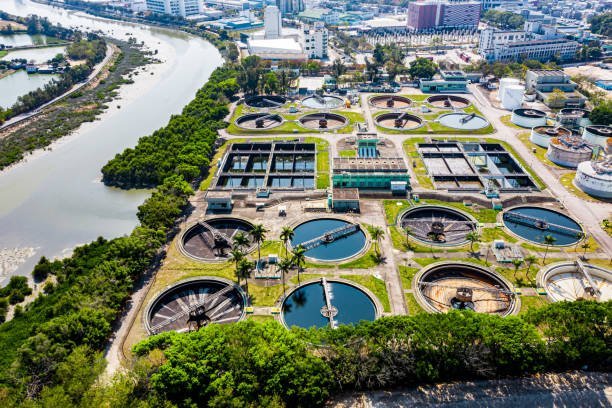
Sewage treatment plants are vital for several reasons:
- Public Health: By removing harmful pathogens and pollutants from wastewater, STPs prevent the spread of waterborne diseases and protect public health.
- Environmental Protection: Properly treated sewage prevents the contamination of rivers, lakes, and oceans, safeguarding aquatic life and maintaining ecosystem balance.
- Water Reuse: Treated wastewater can be reused for various purposes, such as irrigation, industrial processes, and even potable water supply in some cases, reducing the demand on freshwater resources.
- Sustainable Development: Efficient sewage treatment contributes to sustainable urban development by ensuring that growing populations can manage their waste in an environmentally responsible manner.
Frequently Asked Questions (FAQ) About Sewage Treatment Plants
What is a sewage treatment plant?
A sewage treatment plant (STP) is a facility designed to remove contaminants from wastewater—mainly from homes, businesses, and industries—so that the treated water can be safely released into the environment or reused. STPs use a combination of physical, chemical, and biological processes to clean the water and manage the byproducts of treatment, such as sludge.
How does an STP work?
An STP works by moving wastewater through several treatment stages. First, large debris is removed through screening. Then, solids settle out in primary tanks. Next, biological processes break down organic matter in secondary treatment units. Finally, advanced filtration and disinfection in tertiary treatment ensure the water meets safety standards before discharge or reuse.
What are the 3 stages of sewage treatment?
The three main stages are:
Primary Treatment: Removal of large solids and settling of suspended particles.
Secondary Treatment: Biological breakdown of organic pollutants using bacteria and other microorganisms.
Tertiary Treatment: Advanced filtration and disinfection to further purify the water, sometimes including nutrient removal and polishing for sensitive environments.
Can STP water be reused?
Yes, treated sewage water can be reused for many non-potable applications, such as irrigation, toilet flushing, industrial cooling, firefighting, street cleaning, landscaping, and groundwater recharge. Properly treated STP water is clear, odorless, and meets safety standards for these uses.
Is treated sewage water safe for drinking?
Standard STP processes make water safe for non-potable uses. However, with advanced treatment technologies—such as reverse osmosis, activated carbon filtration, and UV disinfection—treated sewage water can be made safe for drinking. This requires strict adherence to regulatory standards and additional purification steps to remove all potential contaminants.
How much does an STP cost?
The cost of installing an STP varies widely based on capacity, technology, site conditions, and regulatory requirements. In India, small residential STPs can cost between INR 1.5 lakhs and INR 6 lakhs, while larger systems for townships or industrial complexes may range from INR 20 lakhs to over INR 1 crore. Ongoing operational and maintenance expenses should also be considered.
What are the challenges in STP maintenance?
Key challenges include:
Limited technical expertise and training for operators
Scarce financial resources for maintenance and upgrades
Lack of regular monitoring, leading to system failures or inefficiencies
Ensuring compliance with environmental regulations
Managing operational costs, such as energy and chemicals
CONCLUSION
Sewage treatment plants are fundamental to modern waste management systems, providing a structured and efficient means to handle and treat wastewater. These facilities use a combination of physical, chemical, and biological processes to remove contaminants, ensuring that the treated water is safe for discharge or reuse. By protecting public health and preserving environmental quality, sewage treatment plants are indispensable to sustainable urban development. Additionally, these plants are crucial for effective liquid waste treatment, ensuring that all forms of wastewater are treated responsibly, minimizing environmental impact, and supporting the health of local ecosystems.
At the heart of this essential service are companies like SUSBIO, a leading STP manufacturer committed to innovation and sustainability. Our products like packaged sewage treatment plants and prefabricated sewage treatment plants, offers tailored solutions for diverse needs, from small communities to large industrial facilities. These advanced systems are designed for easy installation, operational efficiency, and minimal maintenance, making them ideal for various applications.
Packaged sewage treatment plants are compact, all-in-one systems that provide an efficient solution for areas with space constraints or limited infrastructure. They are particularly suited for remote locations, residential complexes, and small industries. By delivering reliable performance in a compact form, these systems ensure that wastewater treatment is accessible and effective, regardless of the setting.
Prefabricated sewage treatment plants offer modular solutions that can be quickly assembled and scaled according to specific requirements. These systems are highly customizable, allowing for precise adaptation to different capacities and treatment needs. The use of high-quality materials and cutting-edge technology ensures that prefabricated STPs provide long-term durability and superior treatment outcomes.
As a top STP manufacturer, We are dedicated to advancing the field of sewage treatment through continuous innovation and commitment to quality. Our expertise and comprehensive approach to wastewater treatment ensure that all aspects of fecal waste management are addressed, from initial screening to final disinfection and sludge management. This holistic process not only safeguards public health but also protects the environment by preventing the contamination of natural water bodies, making our solutions integral to industrial water treatment as well.
In summary, the role of sewage treatment plants in managing wastewater and protecting the environment cannot be overstated. We are leading the way in providing state-of-the-art solutions that make efficient and sustainable wastewater treatment possible. By investing in advanced systems like packaged and prefabricated sewage treatment plants, we can ensure a cleaner, healthier, and more sustainable future for all with the added benefit of effective chemical wastewater treatment.
For more information on how SUSBIO can meet your sewage treatment needs, visit our website or contact us directly. Together, we can make a significant impact on environmental sustainability and public health through innovative and reliable wastewater treatment model solutions.


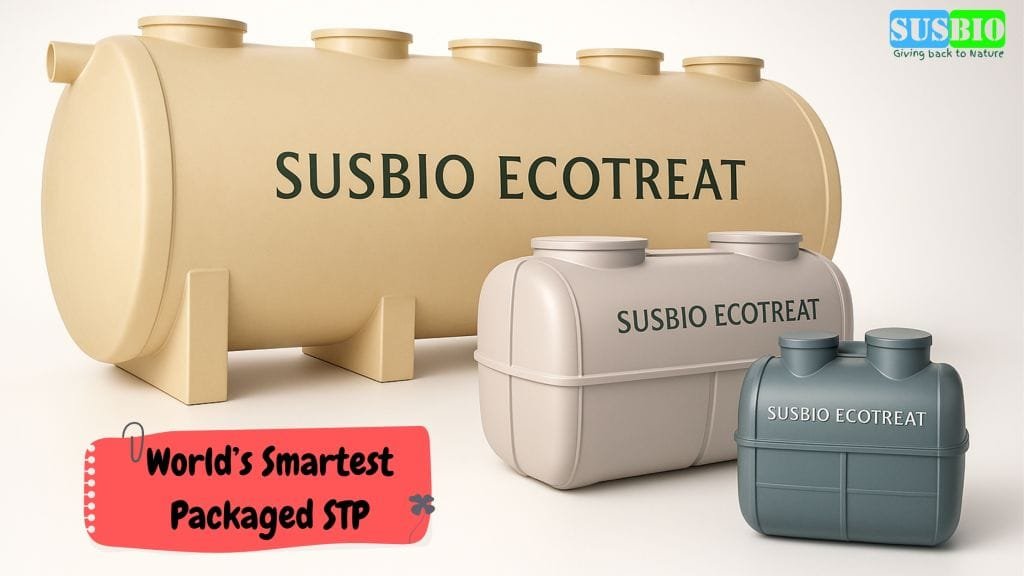
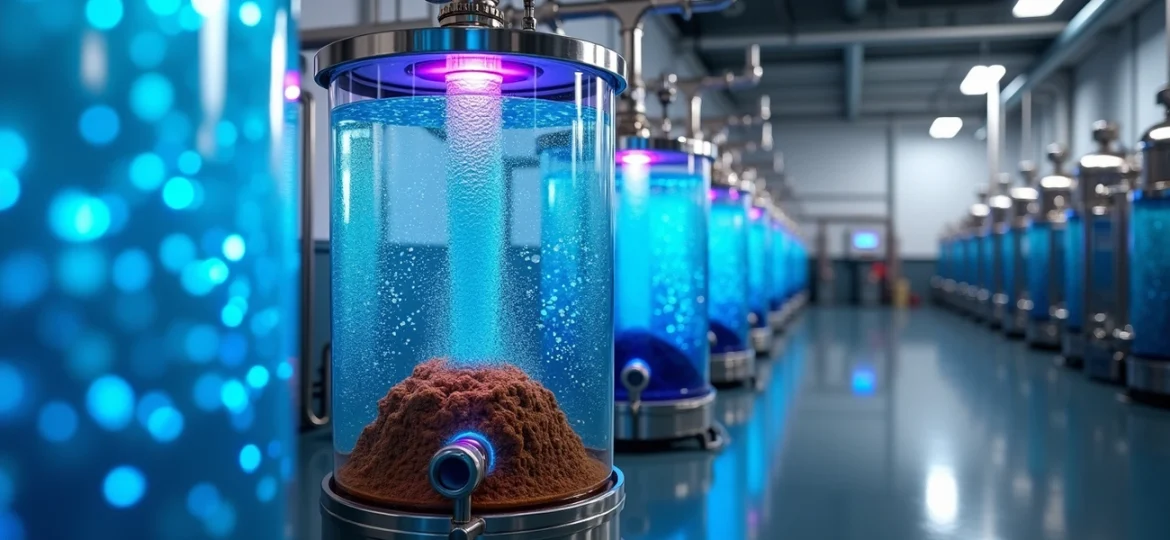
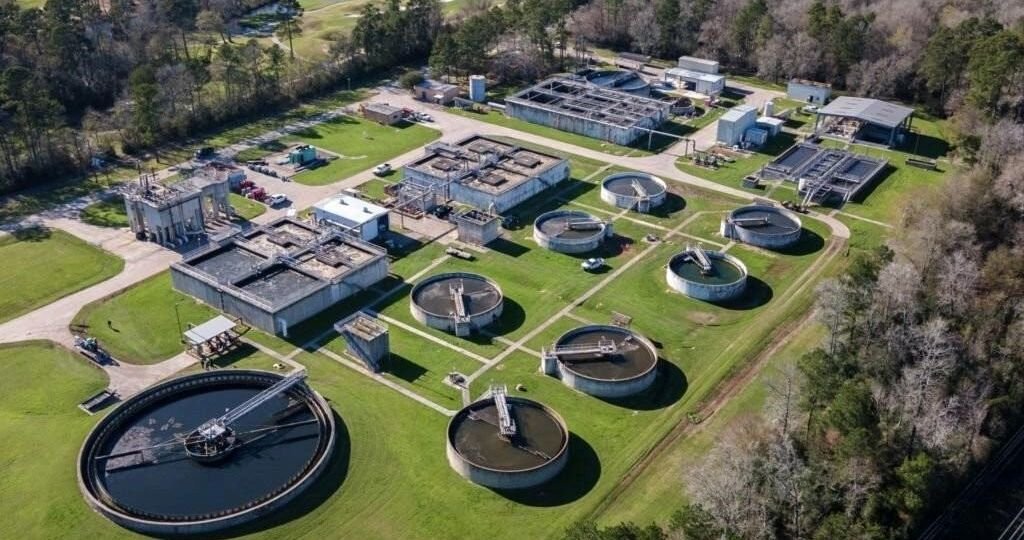
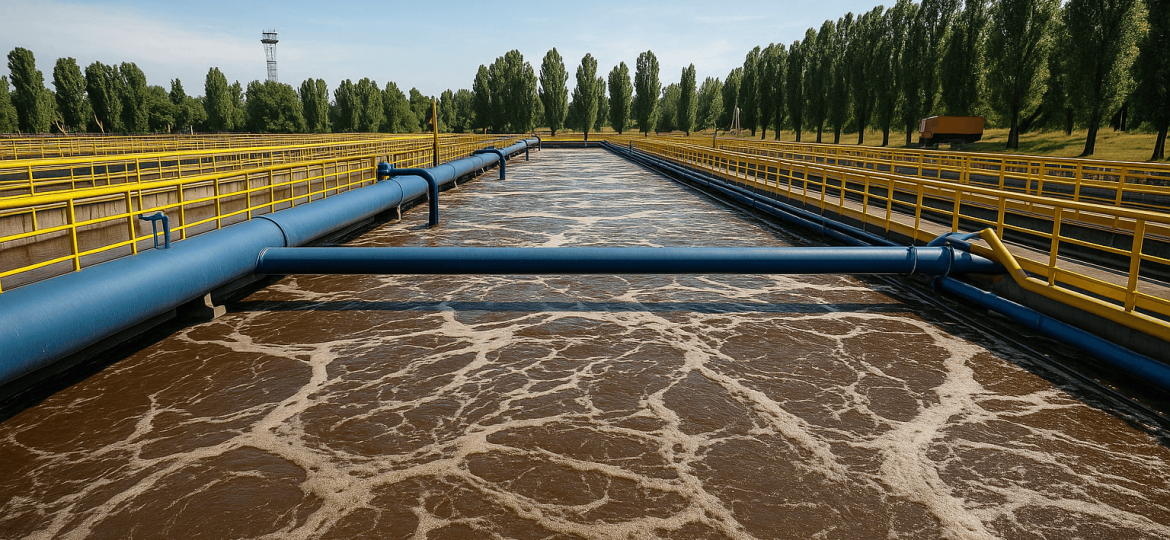

35 Comments
[…] 0 By Akshat Tyagi Latest Blogs July 9, […]
[…] while meeting stringent environmental regulations. This blog delves into why hotels need sewage treatment plants (STPs), the challenges they address, and how SUSBIO ECOTREAT offers a state-of-the-art solution for […]
[…] Sewage treatment plants play a crucial role in safeguarding the environment and conserving water resources. By effectively treating wastewater, these plants remove harmful pollutants and pathogens, ensuring that the water released back into the environment is clean and safe. This not only protects aquatic ecosystems but also prevents waterborne diseases and safeguards public health. Moreover, sewage treatment plants help in the sustainable management of water resources by recycling treated wastewater for various purposes such as irrigation, industrial processes, and even potable water in some cases. Overall, these plants contribute significantly to mitigating water pollution, conserving water, and promoting environmental sustainability. […]
[…] Untreated sewage leads to environmental pollution and poses a significant health risk. Sewage Treatment Plants (STPs) play a vital role […]
[…] increase comes the need for efficient and sustainable solutions for wastewater management. Sewage Treatment Plants (STPs) are crucial in ensuring that wastewater generated by apartment complexes is […]
[…] Sewage Wastewater Treatment, its types, reasons for sewage generation, the role of Sewage Treatment Plants (STPs), and innovative solutions like packaged STPs that are transforming wastewater […]
[…] industrial areas, or large-scale commercial properties, managing sewage effectively is essential. Sewage Treatment Plants (STPs) are at the heart of this transformation, ensuring that wastewater is treated and can be […]
[…] daily, including organic waste, chemicals, and other pollutants. Without a well-designed sewage treatment plants (STPs), untreated sewage can lead to environmental hazards, health issues, and even financial penalties […]
[…] offers a range of sewage treatment plants designed for domestic use. These systems primarily rely on traditional treatment technologies like […]
[…] Sewage treatment plants often face issues related to outdated or insufficient infrastructure. Many plants operate with older equipment that struggles to meet the demands of modern wastewater volumes and regulatory standards. […]
[…] 2025, the demand for efficient, eco-friendly, and innovative sewage treatment plants (STPs) has reached an all-time high. With growing awareness about environmental sustainability, […]
[…] the demand for sustainable and efficient wastewater management grows, sewage treatment plants (STPs) have become essential for residential, commercial, and industrial properties. They ensure […]
[…] Two essential technologies for treating wastewater are Effluent Treatment Plants (ETPs) and Sewage Treatment Plants (STPs). While both systems aim to treat wastewater before its discharge or reuse, their processes, […]
[…] waste management in healthcare facilities. In this blog, we will explore why hospitals need sewage treatment plants, the ideal features of an STP for hospitals, and why SUSBIO ECOTREAT stands out as the best […]
[…] witnessing rapid urbanization and industrial growth, leading to an increased demand for efficient sewage treatment plants (STPs). While STPs play a crucial role in wastewater management, their operation comes with […]
[…] treatment is essential for maintaining environmental sustainability and public health. Modern sewage treatment plants (STPs) are designed with advanced technologies to efficiently purify water before it is discharged […]
[…] sustainability and public health. Two common treatment systems used for wastewater management are Sewage Treatment Plants (STP) and Effluent Treatment Plants (ETP). While both serve the purpose of treating wastewater, […]
[…] of Proper Sewage Treatment: Many urban and rural areas lack adequate sewage treatment plants (STPs), leading to direct discharge into water […]
[…] is a multi-step process that transforms wastewater into environmentally safe water. The primary sewage treatment plant process steps […]
[…] urbanization accelerates and environmental concerns grow, the need for efficient sewage treatment plants (STPs) has never been more pressing. Traditional wastewater treatment systems often struggle […]
[…] struggles to keep up, leading to environmental concerns and water pollution. This is why efficient sewage treatment plants (STPs) are essential for Hyderabad’s sustainable […]
[…] sewage treatment company specializing in the design, manufacturing, and installation of advanced sewage treatment plants (STPs). Over the years, SUSBIO has established itself as one of the top wastewater treatment plant […]
[…] Sewage treatment plants (STPs) are crucial for managing wastewater efficiently, ensuring that sewage is treated before discharge or reuse. With growing concerns over environmental pollution and water scarcity, industries, municipalities, and commercial establishments must adopt cost-effective sewage treatment solutions. Investing in packaged sewage treatment plants and advanced wastewater treatment technologies not only promotes sustainability but also yields significant economic benefits. […]
[…] solutions, SUSBIO provides top-tier sewage and wastewater treatment solutions through the sewage treatment plant process for residential, commercial, and industrial […]
[…] discharge into the environment. These plants use advanced technologies and processes similar to the sewage treatment plant process to treat raw water, which could be sourced from rivers, lakes, groundwater, or even […]
[…] this blog, we will delve into how sewage treatment plant process function, why they are essential, and the detailed steps involved in the wastewater treatment […]
[…] undergoing the wastewater treatment plant process, the treated water meets environmental standards and can be used for irrigation, flushing, or […]
[…] PSTPs are like small factories that clean up dirty water. They use special tiny creatures called microorganisms to break down the bad stuff in the water. These microorganisms are like nature’s cleaners, turning dirty water into cleaner water. These microorganisms are like nature’s cleaners, turning dirty water into cleaner water through the wastewater treatment plant process. […]
[…] types of packaged sewage treatment plants available in the market and how they work through the wastewater treatment plant process. We will also discuss the factors to consider when choosing the right system for your needs, such […]
[…] Sewage Treatment Plants (STPs) are at the core of sustainable wastewater management, offering vital solutions for protecting the environment, conserving water resources, and ensuring public health. With rapid urbanization and increasingly stringent environmental regulations, the demand for efficient, eco-friendly, and technologically advanced sewage treatment solutions is at an all-time high. […]
[…] accelerates, residential developers face increasing challenges in managing wastewater efficiently. Sewage treatment plants (STPs) have become essential for residential projects, ensuring compliance with environmental […]
[…] and population growth. To address these, the government has implemented stringent regulations for sewage treatment plants (STPs) to ensure environmental protection, public health, and sustainable water management. This […]
[…] odors are the most common complaint about sewage treatment plants (STPs). But what if you could eliminate odor, maximize efficiency, and monitor every critical parameter in […]
[…] A sewage treatment plant (STP) is a facility designed to treat and purify wastewater generated from homes, businesses, and industries. Through a series of physical, biological, and sometimes chemical processes, STPs remove contaminants, solids, and pathogens, producing water that is safe to discharge into the environment or reuse for non-potable purposes. These plants play a crucial role in maintaining public health and protecting our natural water bodies. […]
[…] Sewage Treatment Plants (STPs) are critical for maintaining public health, environmental safety, and regulatory compliance. However, like any complex system, STPs can fail due to design flaws, operational errors, or external factors. Recognizing the signs of a malfunctioning STP early can prevent environmental hazards, costly repairs, and non-compliance penalties. In this blog, we’ll explore the most common signs of STP failure, their causes, and how SUSBIO ECOTREAT—a next-generation prefabricated STP—addresses these challenges with unmatched efficiency, reliability, and ease. […]